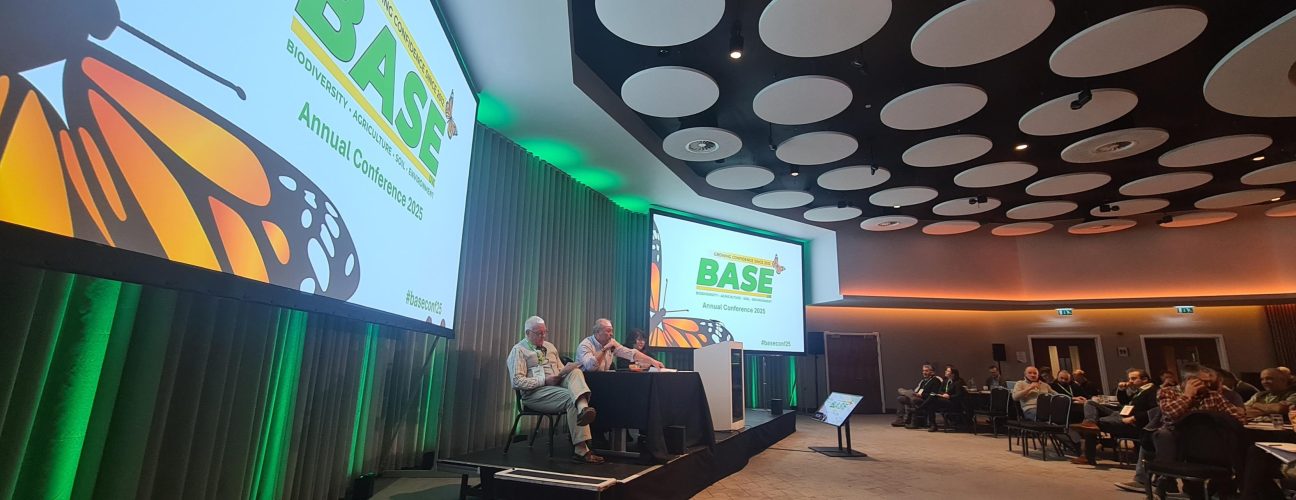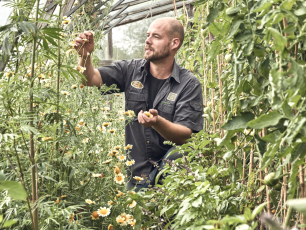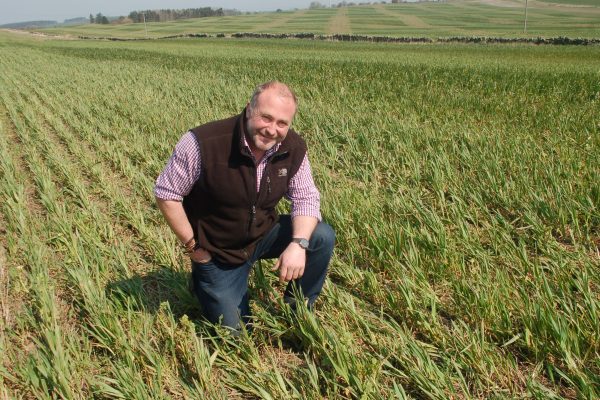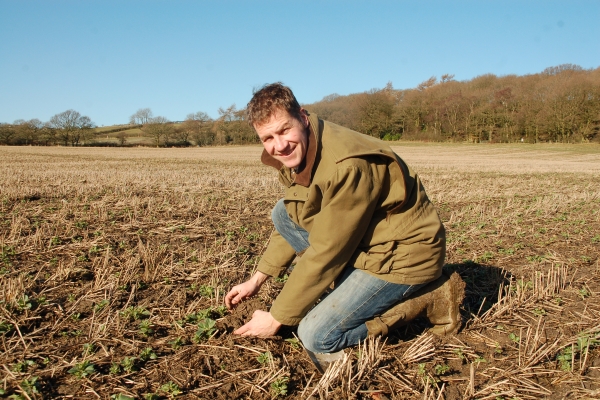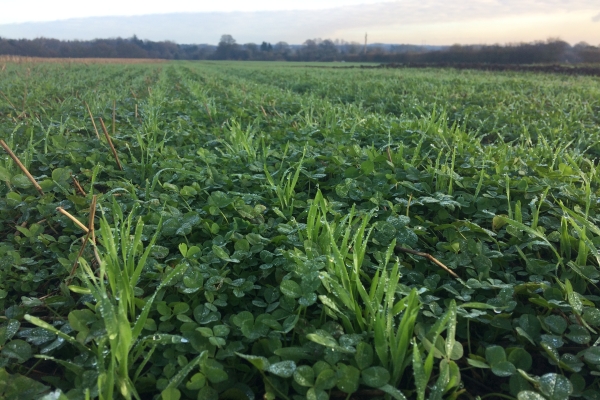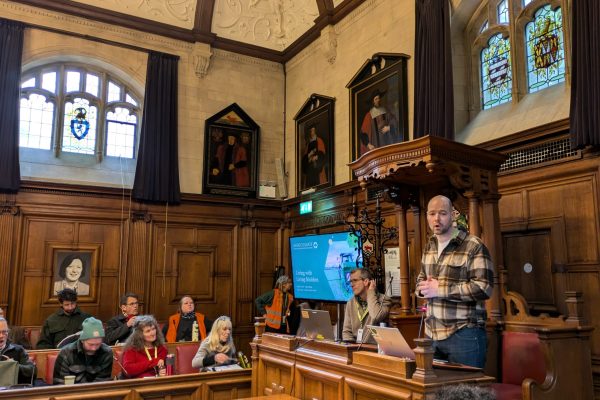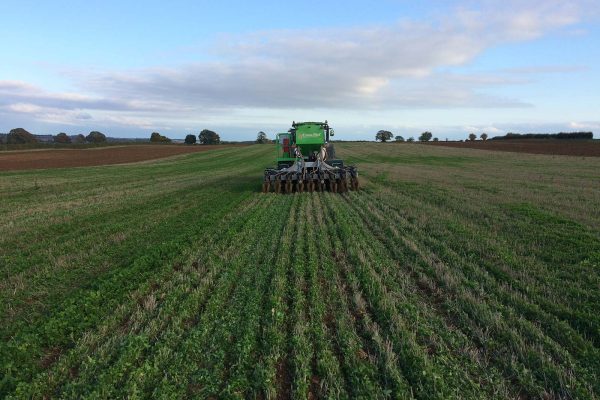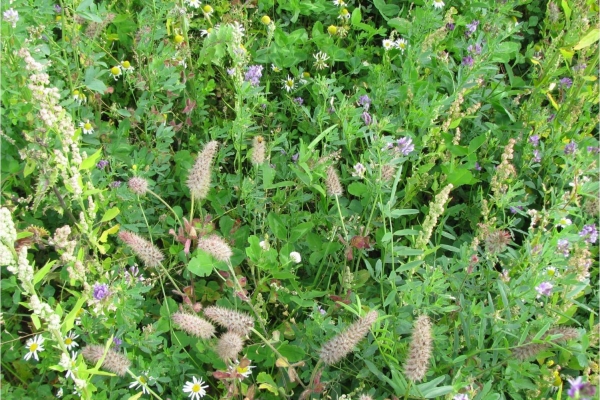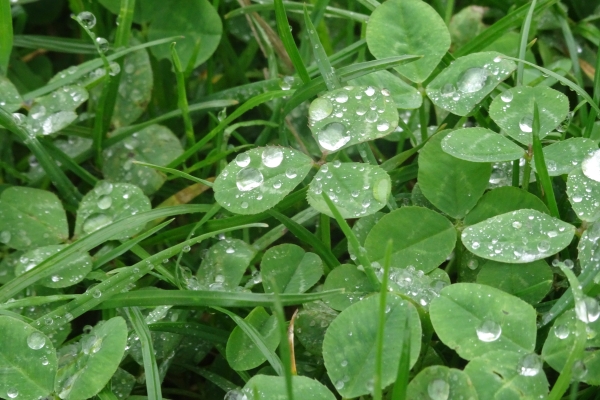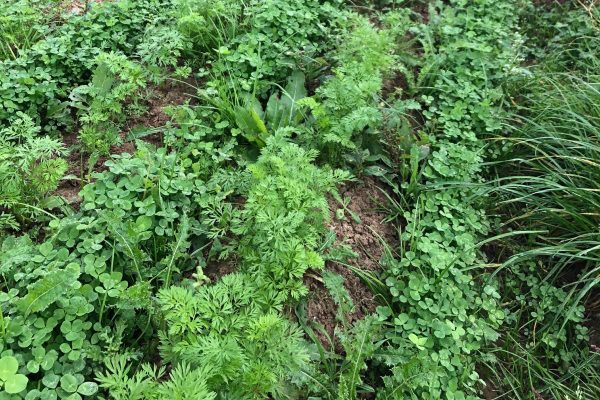Living Mulches Take Centre Stage at the Annual BASE-UK Conference
On 12 February I attended the annual BASE-UK conference in Newcastle. The day was filled with a range of inspiring and informative talks that covered topics including living mulches, on-farm research, strip till in horticulture and building on-farm resilience. BASE (Biodiversity – Agriculture – Soil – Environment) is a farmer-led knowledge exchange group for individuals interested in regenerative agriculture and passionate about the sustainability, health and growth of soil and the farming industry. They have a membership of approaching 500 farmers.
With such a wide range of content covered across the day, I’ve decided to focus on the keynote talk from Frederik V. Larsen, a farmer and agronomist from Denmark, who delivered a brilliant talk on living mulches. This session was very timely as we are about to release a technical guide on living mulches. In recent years, Frederik has gained recognition for his innovative use of living mulches, doing an excellent job of keeping the farming world informed about his progress and the impressive results he’s achieving. Here’s a snapshot of his talk, which opened the conference, his approach to adopting living mulches, and some of the key insights he shared…
Frederik farms at 55.3 degrees north, a similar latitude to Newcastle. The primary reason for him trialling living mulches is to reduce soil erosion; the farm has long been practicing no till and he is experimenting with integrating the system into his operations. Central to the approach is keeping living roots in the soil and providing green cover for as much of the season as possible, due to the importance of root exudates and their role in feeding the soil.
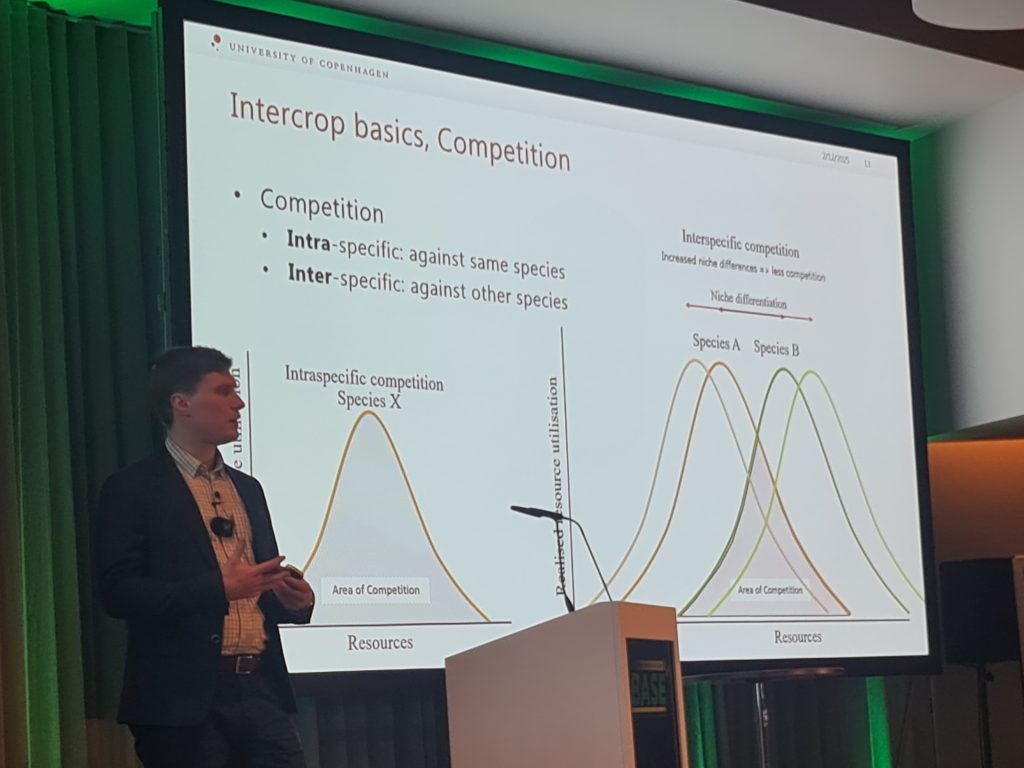
Root complementarity is a key driver for reducing competition between crop and mulch. He’s using lucerne, which has a deep taproot and doesn’t compete with cereal crops in the same way that white clover-based living mulches do. Beyond minimising competition, lucerne is also the most productive nitrogen (N)-fixing legume that can be grown at our latitudes, capable of fixing up to 400kg of atmospheric N per hectare. His model is designed to operate over 4 years of a rotation.

Year 1: Establishment
The system starts by sowing oilseed rape (OSR) with lucerne in the winter, he highlights that clean fields are essential in his system, with minimal thistles, docks and grasses being present. He relies on pre-emergence herbicides and glyphosate to control grass weeds early, as post-emergence broadleaf herbicides aren’t an option.
There’s no need to control lucerne growth in the first year, as its spring development complements the OSR, meaning no yield penalty. However, harvest timing is important – if the OSR is left too late, the lucerne can pull it down. Frederick points out that Year 1 is the easiest stage of the whole process.
Lucerne is seeded at a high rate of 25kg per hectare, which he acknowledges is expensive. To balance costs, harvesting the lucerne for feed is a critical step. The undersown lucerne must have at least two to three leaves before the OSR canopy closes. It can survive six to eight weeks of shading without any problems.
After harvest, he disk cuts the field, using a disk cutter to mow the field down to around 10cm, being careful not to go too low and damage the plant’s crown, as this would affect regrowth. Thanks to stored energy in its taproot, lucerne regrows significantly after cutting. It thrives in the summer heat, allowing for a silage cut in September.
Year 2: Winter Wheat and ‘Chemical Mowing’
Winter wheat is then drilled with an increased seeding rate – around 25% higher than usual. He uses a pre-emergence herbicide to manage weeds, and a strong dose of N is applied in early spring to encourage tillering, help the wheat establish ahead of the mulch and reduce the risk of a yield penalty.
Frederik highlights a critical step in his system – the use of ‘chemical mowing’ at around GS30-GS31 with a low dosage of acetolactate synthase (ALS) inhibiting herbicides to stunt the growth of the lucerne (this practice can be associated with rising levels of herbicide resistance, an issue that requires consideration). Frederik was clear that if you do not control the growth of lucerne in spring you will not get a winter cereal crop, as the lucerne will take over. This makes the choice of lucerne unsuitable for organic and low-input systems; however he recommends the use of black medic in systems where farmers can’t or don’t use the chemical mowing approach. This is due to black medic’s low growth habit and its taproot that reduces competition with the cereal crop.
After the wheat harvest, he disk mows again. The large amount of straw left on the field can slow lucerne regrowth, but within three weeks, it’s back to a good level. He takes another cut around September, using a mower with a swath belt to improve forage quality and keep excess straw out of the mix.
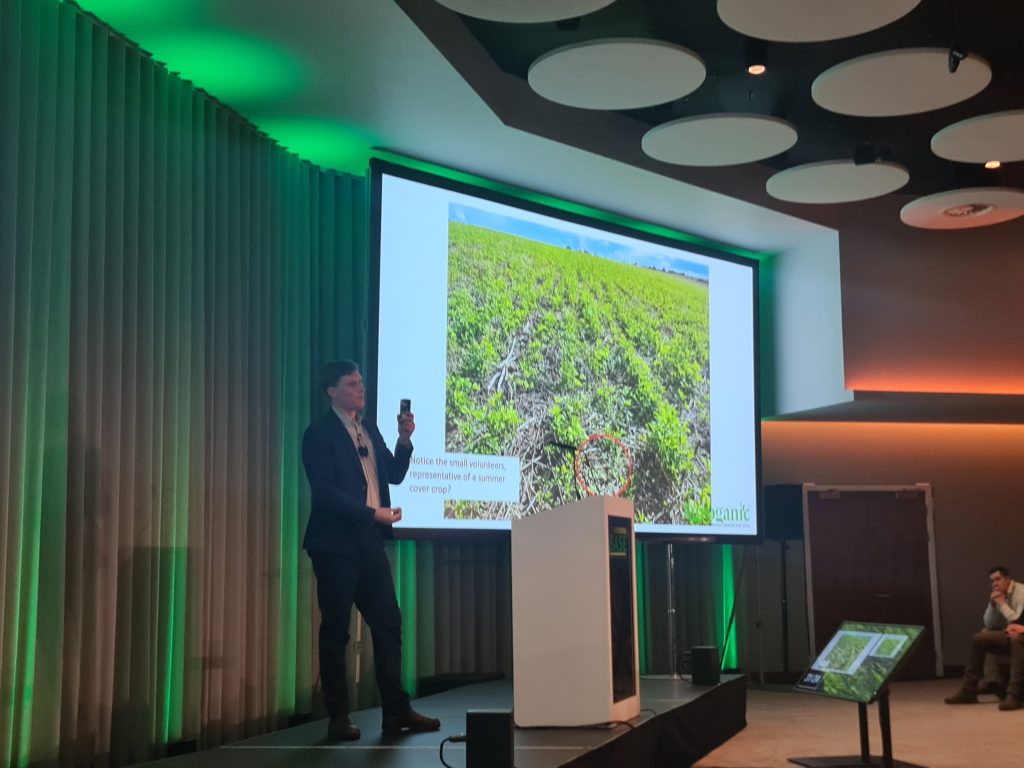
Year 3: Winter Oats and Lucerne Management
Now into year 3 with winter oats drilled into the lucerne, he plans to bale off the oat straw to improve regrowth of the lucerne post-harvest and feels the vigour of the oats will better out-perform the lucerne.
Take-Home Points
Frederik is clear that living mulches come with a high risk of cash crop yield penalties, so it’s important to trial the system on a manageable scale. Understanding root complementarity between the mulch and cash crop is essential, as is recognising that reduced cereal crop tillering is a common issue. Increasing seeding rates can help counter this, and N applications should be done earlier in winter to support tillering.
A living mulch system needs to be part of a well-designed rotation, planned carefully to serve a clear purpose within the whole farm system.
